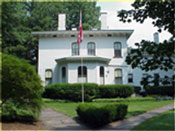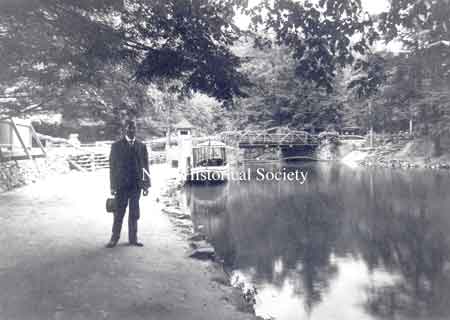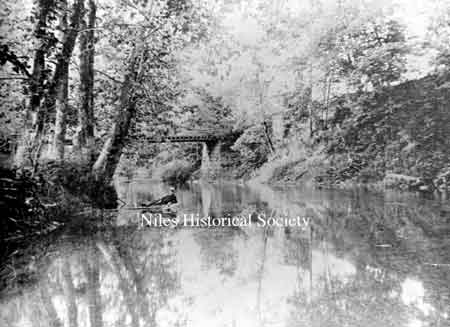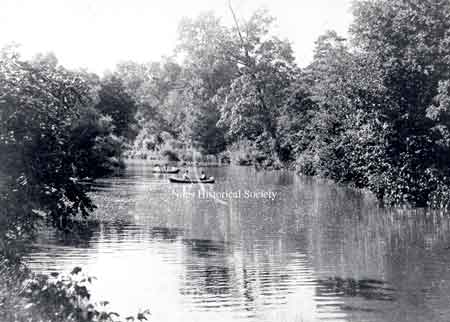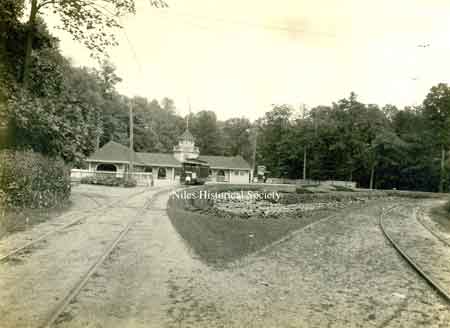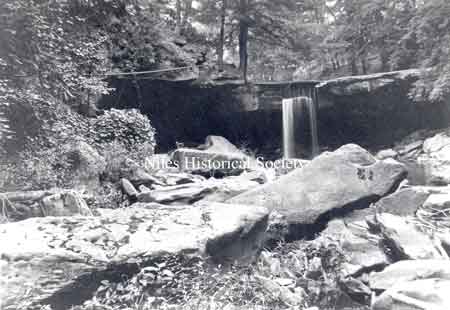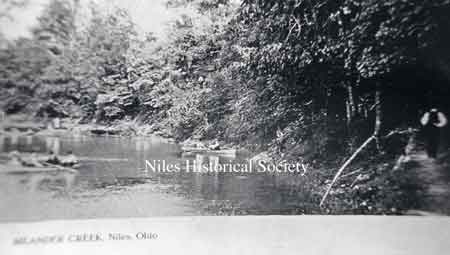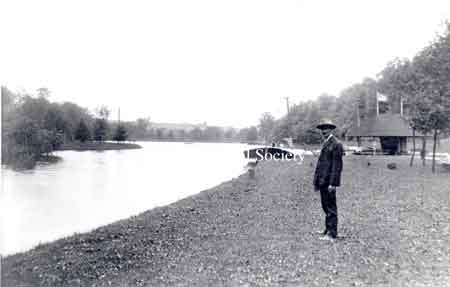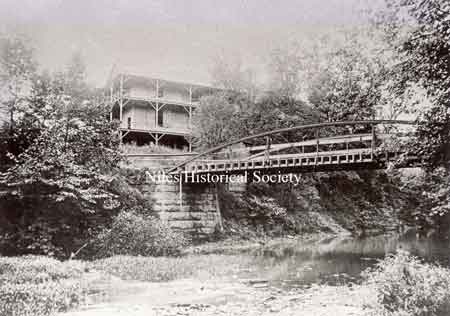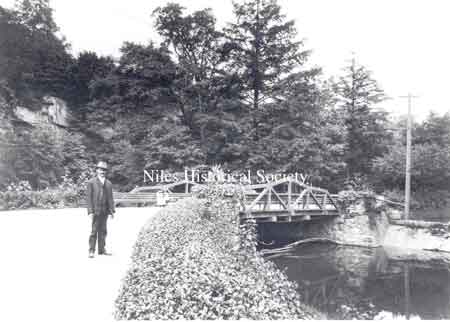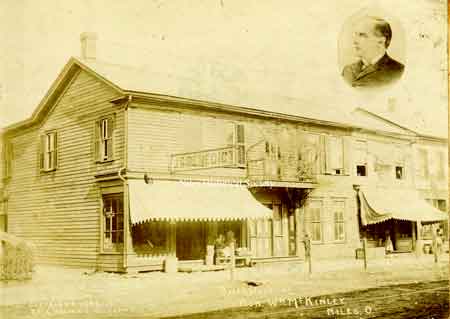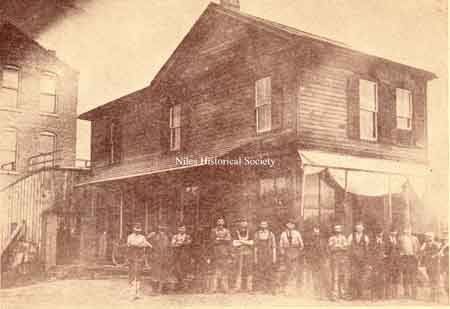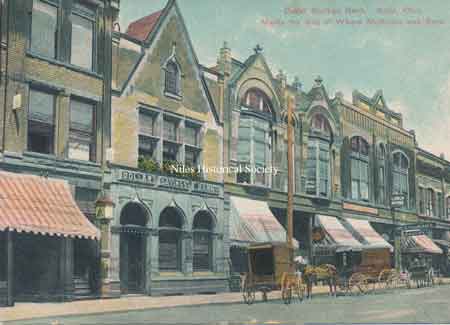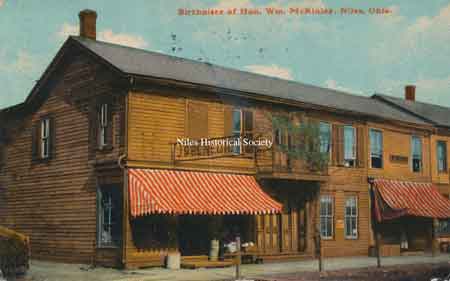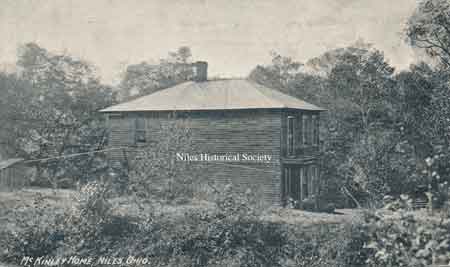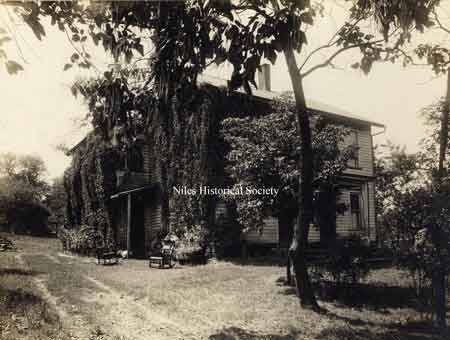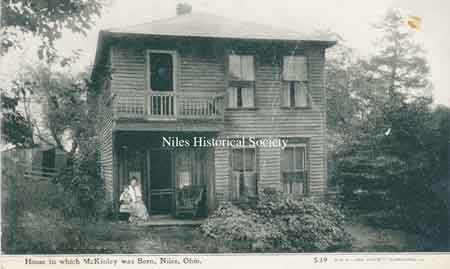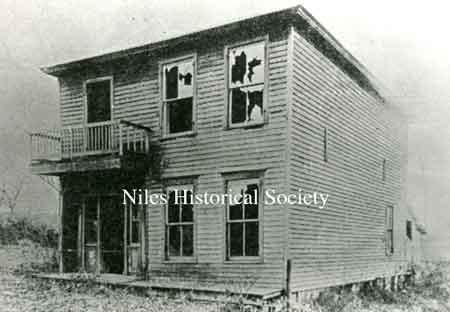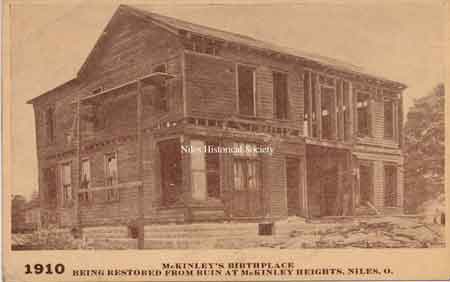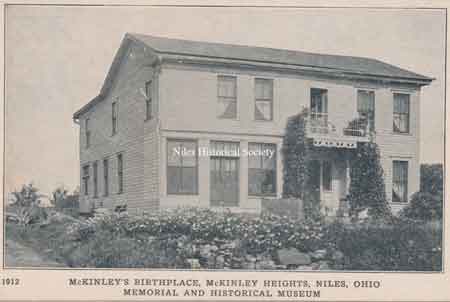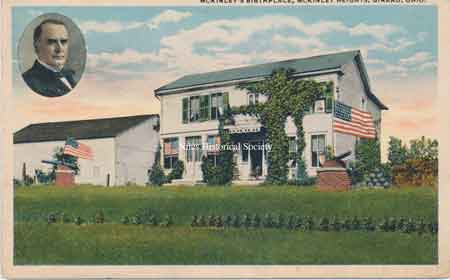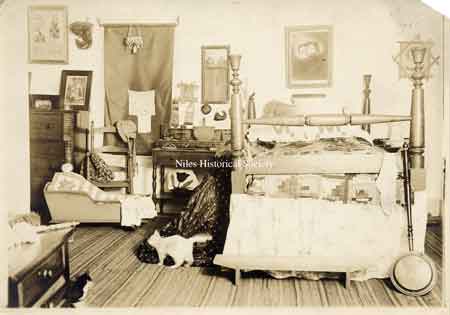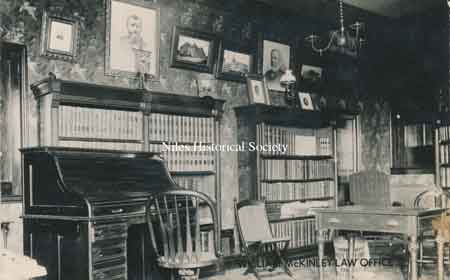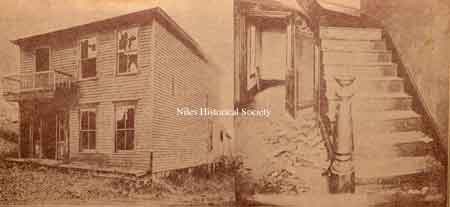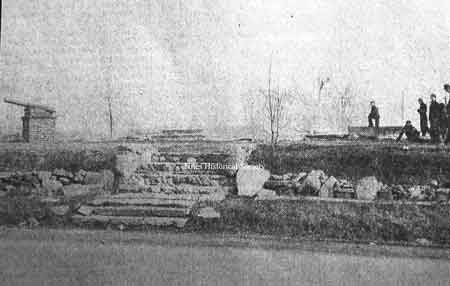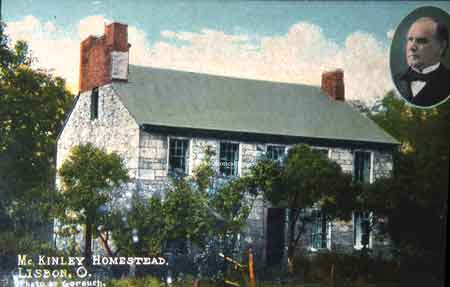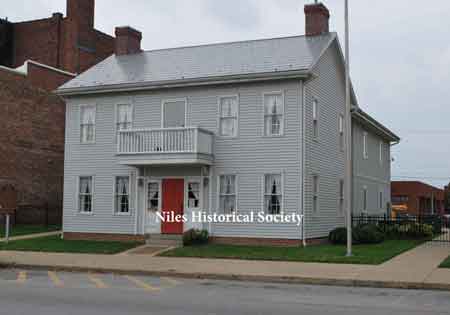Ward-Thomas Museum


Riverside Park 1893 — 1901 in Evansville
Riverside Park 1893-1901
Home of the Niles Historical Society
503 Brown Street Niles, Ohio 44446
Click on any photograph to view a larger image.
To
purchase a high-resolution print of any listed photograph on this page
without the visible watermark,
Use the image ID Example: PO1.1023
News
Tours
Individual Membership: $20.00
Family Membership: $30.00
Patron Membership: $50.00
Business Membership: $100.00
Lifetime Membership: $500.00
Corporate Membership:
Call 330.544.2143
Do you love the history of Niles, Ohio and want to preserve that history and memories of events for future generations?
As a 501(c)3 non-profit organization, your donation is tax deductible. When you click on the Donate Button, you will be taken to a secure Website where your donation will entered and a receipt generated.
|
PO1.1060 |
Riverside Park 1893-1901 With the development of the electric railway, it afforded people a means to travel places they had never been before and gave people more opportunities for parties and amusement away from home. Promoters were quick to plan and construct amusement parks along their interurban lines, usually midway between two towns and frequently along side a charming stream for the pleasures of bathers, boat riders and fishermen. Picnic grounds, base ball diamonds, bleachers and dance pavilions, steam boats and rustic walkways were common features of these parks. |
PO1.1053 |
| |
||
|
The trolley was an excellent means of getting away from the summer heat of the city and admission was free to those who arrived at the park via the trolley. PO1.1055 |
A view of the streetcar lines and admission gates at Riverside Amusement Park on the southwest corner of Route 46 and Salt Springs Road when streetcars were popular in the late 1880's and early 1900's. PO1.1727 |
|
The Riverside Park was opened in Evansville during the summer of 1893. It was located on the southwest corner of Niles, off Route 46, going south toward Mineral Ridge. Turning right on Salt Springs Road at Evansville, the entrance of the Riverside Park was located on the south side of the street, just beyond the railroad tracks and before Meander Creek. On opening day, the Mineral Ridge – Niles Electric Railway Company carried 4,000 people to and from the park. The fare was one nickel with free admission to the amusement park. |
||
| The manager of the amusement park advertised that the facilities included a large dance pavilion, which had a rambling veranda and a walking bridge across Meander Creek. This structure, with a dance floor 80 feet by 50 feet, had been built at a cost of $2,000. Other attractions included baseball diamonds, lawn tennis, swings, slides, and rowboats. | ||
| |
||
There
was also a small steamer, “the Mayflower”, which would
carry 75 passengers as it slowly went up and down Meander Creek.
An announcement was made that the popular Leffingwell Orchestra
would be playing at the dances. The newspaper described the park in this way. “All around are mighty beech and oak trees with huge gnarled arms. At the bottom of a picturesque glen glides the Meander, which looks like a silver ribbon as it flows over the stones below. On this stream are placed many boats, and pleasure seekers find it possible to row as far as Ohltown, a distance of four miles. Rustic benches, natural springs- in fact all that one could imagine as belonging to a place of this kind, are among the many virtues of this romantic spot.” |
||
| |
||
|
PO1.697A |
In 1890 the land upon which McKinley’s house stood on Main Street, was needed as a site for the City National Bank (later McKinley bank) It was not known who undertook and financed the project, but McKinley’s house was cut in two and the part in which McKinley had been born was moved to Riverside Park, some time after 1896, possibly as a museum attraction. The second half of the house was moved to Franklin alley and used as a shop where the Harris rotary offset presses were made. | |
| |
||
| In 1894 the Riverside Park Company constructed a dam across the Meander Creek so as to enlarge the boating area. They stocked the water with fish in the hopes of attracting the serious anglers By 1901 the Riverside Park proved to be unprofitable and the owners, William Allison, Clement Souder, Frances Thomas, E. A. Hartzell, Maggie Hartzell, S. S. Holeton, and Selina Holeton, sold the property to Buckeye Leather Company for $1,700. |
||
| In 1909 Mrs. Joseph Wess, the former Lulu Mackey, the first female member of the Trumbull County bar, decided to buy the house and restore it as nearly as possible. Miss Mackey had it moved by Frank Kramer to her property at McKinley Heights. She purchased the other section and had it moved as well, then proceeded to create a privately-owned museum which she operated until her death in 1934. | ||
The museum was located on the Tibbetts property where the McKinley Heights Plaza is today at the intersection of Routes 422 and 169( Route 169 is still referred to as Tibbetts-Wick Road). After the new National McKinley Memorial opened in 1917, people still visited this museum to see some of the original McKinley furniture and artifacts collected by Lulu Mackey. |
||
| Interior views of a bedroom and a law office situated in the McKinley Museum on the Tibbetts property in McKinley Heights. | ||
|
After falling into disrepair, vandals burned the structure and it was destroyed in the late 1930s. PO1.699 |
||
|
The home was built in 1806 by Gideon Hughes, the founder of the Rebecca Jane furnace in Lisbon, Ohio. In 1809, James McKinley, the president's grandfather, migrated from PA. to this house in New Lisbon, Ohio. It was here the president's father grew up. He married Nancy Allison in 1829 and sometime during the 1830's moved his family to Niles. |
|
|
